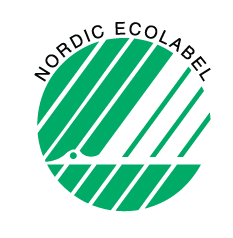
Nordic countries have been recognised for their advanced sustainability practices, particularly at a business level. In Europe there is a north-south divide in sustainability that clearly makes northern and continental European countries front-runners. Despite some evidence that globalisation results in the homogenisation of corporate practices and human values across societies, culture, particularly national culture, is believed to influence corporate conduct. As an example, cultural traits of Scandinavian countries favour CSR engagement of businesses. The participative democracy if Denmark, Danish managers’ openness to social initiatives and a general trust characterising the Danish society are elements that promote the development of corporate responsibility. The Nordic Ecolabel is a voluntary certificate 100% made in Scandinavia that was established in 1989 by the Nordic Council of Ministers. The original aim of the label was probably to respond to the needs of the new “green consumer” movement that strengthened in the 80s after the environmentalism wave of the 1970s. This does not mean that the label is not interesting today- after all we know that consumers are increasingly willing to learn more about what they buy and compare different products based on environmental and social credentials.
What issues does the Nordic Ecolabel address?
The label has a very holistic approach looking at a product’s environmental footprint from raw material sourcing to waste. Other elements like quality, product functionality and health aspects are also taken into account.
What products can be labelled?
63 different types of products can use the Nordic Ecolabel. Textiles are among the accepted products and are divded into following categories: clothing and accessories that consists 90% by weight of textile fibres; textile products for interior use (decoration and upholstery) that consists 90% by weight of textile fibres; fibre, yarn and fabrics whose end uses are clothing and interiors. Also skins and leather are accepted.
What is expected from textile and clothing companies?
The criteria to release the label include:
- organic production of natural fibres (that has to be proven with a relevant certification), at least 10% of the total amount of cotton bought annually (in kg);
- limited (chrome) or zero presence of certain chemical substances (arsenium, cadmium and lead) in tannery; quality tests such as colour fastness (also to rubbing), flex resistance; a plan for reduction of water and energy consumption per manufactured unit;
- and recycling plan that respects relevant national regulations.
Despite the label’s focus mainly ecological susainability, it addresses also social issues by asking applicants to present a plan for ethical production that applies, preferably, also to subcontractors. The aim of the Nordic Swan, hence, is to push applicants to strive beyond on these issues and, with time, get SA8000 certified. The applicants’ companies are inspected upon application and, possibly, later again.
How much does it cost?
The one off application costs EUR2,000 and an annual licensing fee has to be paid to the label’s organisation. As many other standards, the right to use the label is given based on a licensing contract.
What is the impact of the label?
The Nordic Ecolabel may be seen as one of the many eco-labels that exist in Europe. Importnaly though: This is not true in Scandinavian countries where it is THE label that ensures products are better. 62% of Nordic consumers state that the label is at the top of their minds and in 2010, 2,000 companies got the certification (in many cases for more than just a single product).

